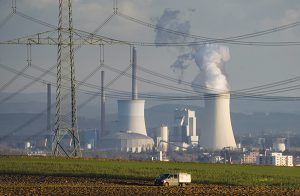Bloomberg
Lawmakers in the European Parliament’s environment committee agreed a set of draft compromise changes to a sweeping overhaul of the European Union’s carbon market in a push to further strengthen the cap-and-trade program.
Representatives of the biggest political groups in the ENVI committee signed off on joint proposals to toughen carbon permit supply controls and improve existing shields against price shocks in the EU Emissions Trading System. They will be put to a vote on May 16, when the committee casts the ballot on the market overhaul, said Michael Bloss, a German overseeing the reform on behalf of the Greens.
“The European Parliament’s position has always been to have more ambition,†he told reporters. “The ETS is the biggest climate instrument we have in the EU.†The reform of the carbon market was proposed by the European Commission in July as part of a massive package to align the bloc’s policies with a stricter emissions-reduction target for 2030. To enter into force, it needs backing from EU member states and the European Parliament.
Representatives of the European People’s Party, Socialist and Democrats, Renew and Greens agreed to go beyond the Commission’s proposal to strengthen the Market Stability Reserve, a supply-control mechanism that helped shore up a glut of emissions permits in the past couple of years.
Under their plan, the reserve would start absorbing excess allowances when their total number exceeds 700 million. That compares with 833 million sought by the Commission.
The intake rate, or the percentage of carbon permits taken into the reserve from the market, would stay at 24%.
The groups also agreed to lower the intervention threshold in case of carbon price spikes. Their compromise amendment would pave the way for the EU to step in if for more than six consecutive months the average price is more than twice the average price during the two preceding years. The current rules require a higher trigger of a three-times increase.
In such a case, the Commission would be required to call within seven days a meeting with national governments to assess if the price development corresponds to changing market fundamentals.
 The Gulf Time Newspaper One of the finest business newspapers in the UAE brought to you by our professional writers and editors.
The Gulf Time Newspaper One of the finest business newspapers in the UAE brought to you by our professional writers and editors.
